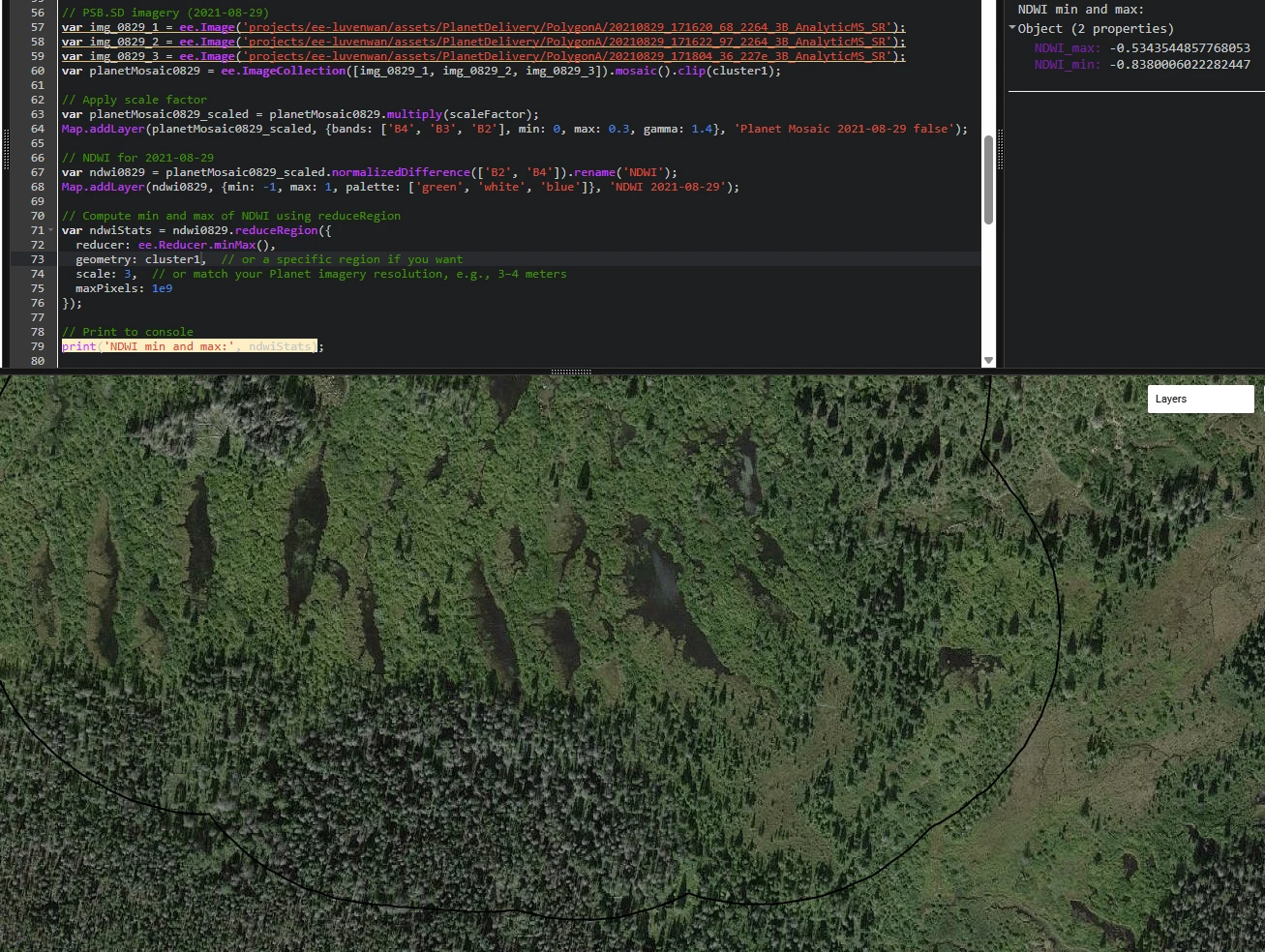Hi everyone,
I’m working on tracking beaver pond and wetland dynamics using PlanetScope Surface Reflectance (SR) imagery (PS2 and PSB.SD). For validation, I compared NDWI values in beaver pond areas with NAIP imagery for the same sites and dates.
Here’s what I found:
-
NAIP (2021): NDWI for beaver ponds ~ +0.3 (as expected for water bodies)
-
Planet PS2 (2021-08-28): NDWI for same ponds ~ -0.37
-
Planet PSB.SD (2021-08-29): NDWI for same ponds ~ -0.67
Both Planet images are SR products (AnalyticMS_SR), and I applied the recommended scaling factor (0.0001 for uint16). However, the NDWI values for ponds are unexpectedly negative—even though visual inspection shows water clearly present in the RGB and false-color composites.
Has anyone seen similar NDWI behavior in PlanetScope SR imagery for water bodies? Could this be related to specific characteristics of Planet sensors, or is there another preprocessing step I might have missed?
Any insights or suggestions for adjusting thresholds (or alternative indices) would be greatly appreciated.
Thanks in advance!
Luwen Wan (luwenwan@stanford.edu)
Postdoctoral Researcher
Stanford University






